

Articles
How Much Is Fertilizer
Modified: October 28, 2024
Looking for articles on fertilizer prices? Discover how much fertilizer costs and find valuable information on the latest trends and factors affecting its pricing.
(Many of the links in this article redirect to a specific reviewed product. Your purchase of these products through affiliate links helps to generate commission for Storables.com, at no extra cost. Learn more)
Introduction
In agriculture, fertilizer plays a crucial role in promoting plant growth and increasing crop yields. It provides essential nutrients to the soil, ensuring that plants have the necessary resources for healthy development. However, whether you’re a farmer or a home gardener, one important question always comes to mind: how much does fertilizer cost? Understanding the factors that influence fertilizer prices can help you make informed decisions about choosing the right type and quantity of fertilizer for your needs.
There are various types of fertilizers available on the market, including organic and inorganic options. Organic fertilizers are derived from natural sources, such as manure, compost, and plant materials. On the other hand, inorganic or synthetic fertilizers are chemically manufactured and contain concentrated nutrients.
Several factors contribute to the fluctuations in fertilizer prices. Supply and demand dynamics, transportation costs, manufacturing expenses, market competition, and environmental regulations all play a role in determining the final price of fertilizer products.
When it comes to purchasing fertilizer, there are certain factors you should consider. These include the nutrient requirements of your crops, soil testing to identify deficiencies, the nutrient content and formulation of the fertilizer, and the overall cost-effectiveness.
In this article, we will delve into the various types of fertilizers, explore the factors that influence their prices, and provide insights on purchasing fertilizer effectively to meet your specific needs. By the end of this article, you will have a better understanding of fertilizer costs and be equipped to make informed decisions when buying fertilizer for your agricultural or gardening endeavors.
Key Takeaways:
- Understanding the types of fertilizers, their benefits, and limitations empowers informed decision-making for sustainable and effective plant growth and soil health.
- Considering factors such as nutrient requirements, cost-effectiveness, and environmental impact guides the selection of fertilizers for optimal crop productivity and long-term sustainability.
Read more: How Much Fertilizer Per Acre Of Corn
Types of Fertilizer
Fertilizers can be broadly categorized into two main types: organic and inorganic. Each type has its own unique characteristics, benefits, and considerations.
Organic Fertilizers: Organic fertilizers are derived from natural sources, such as animal and plant materials. They provide a slow-release of nutrients and improve soil health in the long term. Common examples of organic fertilizers include compost, manure, bone meal, and fish emulsion.
Organic fertilizers offer several advantages. Firstly, they improve soil structure by enhancing its ability to retain water and nutrients. Secondly, they promote the growth of beneficial microorganisms, which further contribute to soil fertility. Lastly, organic fertilizers are considered environmentally friendly since they are made from renewable resources and have minimal negative impacts on the ecosystem.
However, organic fertilizers also have some limitations. They tend to have relatively lower nutrient concentrations compared to inorganic fertilizers, so larger quantities may be required to provide sufficient nutrients for plants. They also release nutrients more slowly, so they may not provide an immediate boost to plant growth.
Inorganic Fertilizers: Inorganic fertilizers, also known as synthetic or chemical fertilizers, are manufactured using chemical processes. These fertilizers typically contain concentrated nutrients and provide a quick release of essential elements for plants. The nutrient content is usually represented by three numbers on the package, indicating the percentage of nitrogen (N), phosphorus (P), and potassium (K).
Inorganic fertilizers offer several advantages. They provide nutrients in easily absorbable forms, ensuring rapid plant growth and development. They can be customized to meet the specific nutrient needs of different crops and can be applied in precise amounts. Inorganic fertilizers also have a longer shelf life and are readily available in the market.
However, the excessive use of inorganic fertilizers can have negative impacts on the environment. The runoff from fields can cause water pollution, and the overuse of certain nutrients can lead to imbalances in the soil, affecting long-term fertility. Therefore, proper application techniques and adherence to recommended dosage are crucial when using inorganic fertilizers.
Both organic and inorganic fertilizers have their own place in agriculture and gardening. The choice between the two depends on factors such as crop type, soil condition, nutrient requirements, and environmental considerations.
Now that we have explored the different types of fertilizers, let’s take a closer look at the factors that influence the prices of these fertilizers.
Organic Fertilizers
Organic fertilizers are derived from natural sources such as animal waste, plant residues, and compost. They provide nutrients to the soil gradually over time and help improve soil health in the long term.
One of the main benefits of organic fertilizers is their ability to enhance soil structure and fertility. These fertilizers contain organic matter, which helps improve soil texture, water-holding capacity, and nutrient retention. As organic fertilizers decompose, they release nutrients slowly, ensuring a steady supply of essential elements for plant growth.
Organic fertilizers also promote the growth of beneficial microorganisms in the soil. These microorganisms help break down organic matter and convert nutrients into forms that are readily available to plants. By fostering a healthy soil ecosystem, organic fertilizers contribute to better nutrient uptake and overall plant health.
Another advantage of organic fertilizers is their environmental sustainability. Unlike synthetic fertilizers, organic fertilizers are derived from renewable resources, making them a more eco-friendly choice. They have minimal negative impacts on the environment and reduce the risk of water pollution from nutrient runoff.
However, it’s important to note that organic fertilizers generally have lower nutrient concentrations compared to synthetic fertilizers. This means that larger quantities may be required to provide the same amount of nutrients. Organic fertilizers also release nutrients more slowly, so they may not provide an immediate boost to plant growth.
Common types of organic fertilizers include:
- Compost: Compost is made from decomposed organic matter, such as kitchen scraps, yard waste, and leaves. It is a rich source of nutrients and helps improve soil structure.
- Manure: Animal manure, such as cow, horse, or poultry manure, is an excellent organic fertilizer. It is high in nitrogen, phosphorus, and potassium, and provides a slow-release of nutrients.
- Bone Meal: Bone meal is made from ground-up animal bones and is a good source of phosphorus and calcium. It is particularly beneficial for promoting root development in plants.
- Fish Emulsion: Fish emulsion is a liquid fertilizer made from fish byproducts. It is rich in nitrogen and micronutrients, providing a quick source of nutrients for plants.
When using organic fertilizers, it’s important to follow the recommended application rates and consider factors such as crop type, soil conditions, and nutrient requirements. Conducting a soil test can help determine any nutrient deficiencies and guide the appropriate use of organic fertilizers.
Overall, organic fertilizers offer numerous benefits, including improved soil health and environmental sustainability. Incorporating organic fertilizers into your gardening or farming practices can help support long-term soil fertility and promote healthy plant growth.
Inorganic Fertilizers
Inorganic fertilizers, also known as synthetic or chemical fertilizers, are chemically manufactured to provide essential nutrients to plants. These fertilizers contain concentrated nutrients that are readily available for plant uptake, offering a quick boost to growth and development.
One of the main advantages of inorganic fertilizers is their high nutrient concentration. The nutrient content is usually represented by three numbers on the package, indicating the percentage of nitrogen (N), phosphorus (P), and potassium (K). This allows for precise control over the nutrient composition applied to the soil, based on the specific requirements of different crops.
Inorganic fertilizers provide nutrients in easily absorbable forms, ensuring efficient uptake by plants. This leads to rapid and visible improvements in plant growth, making them particularly useful for crops that require an immediate nutrient boost. In addition, inorganic fertilizers have a longer shelf life and can be stored for longer periods without losing their nutrient content.
Another advantage of inorganic fertilizers is their convenience. They are readily available in various formulations and can be easily applied through different methods, such as broadcasting, banding, or foliar spraying. Furthermore, inorganic fertilizers can be quickly dissolved and absorbed by plants, making them suitable for use during critical growth stages or in nutrient-deficient soils.
However, the excessive use of inorganic fertilizers can have negative impacts on the environment. The runoff from fields can contaminate water bodies, leading to the eutrophication of aquatic ecosystems. It is crucial to follow recommended application rates and techniques to minimize these environmental risks.
Inorganic fertilizers can be further classified into two main categories:
- Macronutrient fertilizers: These fertilizers contain the primary nutrients required for plant growth, namely nitrogen (N), phosphorus (P), and potassium (K). Different formulations are available to cater to specific nutrient requirements. For example, a fertilizer with a ratio of 10-10-10 contains equal parts of nitrogen, phosphorus, and potassium.
- Micronutrient fertilizers: Micronutrient fertilizers provide essential trace elements that are required in smaller quantities, such as iron, zinc, copper, manganese, and boron. These elements are essential for various metabolic functions in plants and are often deficient in certain soils.
When using inorganic fertilizers, it is important to carefully follow the instructions on the packaging. Overapplication can lead to nutrient imbalances, soil acidification, and even plant toxicity. Regular soil testing can help determine the nutrient needs of your crops and guide the appropriate use of inorganic fertilizers.
While inorganic fertilizers offer quick and targeted nutrient delivery, they should be used in conjunction with other sustainable agricultural practices. This includes practices like crop rotation, cover cropping, and organic matter addition, which help maintain soil health and fertility in the long term.
In summary, inorganic fertilizers provide a quick and efficient method of delivering essential nutrients to plants. They offer precise control over nutrient composition, convenience in application, and rapid growth response. However, careful usage and environmental considerations are important to ensure sustainable and responsible fertilization practices.
Factors Affecting Fertilizer Prices
The prices of fertilizers are influenced by several factors, including supply and demand dynamics, transportation costs, manufacturing expenses, market competition, and environmental regulations. Understanding these factors can help you make sense of the fluctuations in fertilizer prices and make informed decisions when purchasing fertilizers.
Supply and Demand: Like any other commodity, the supply and demand of fertilizers play a significant role in determining their prices. When the demand for fertilizers exceeds the available supply, prices tend to rise. Conversely, when there is a surplus of fertilizers in the market, prices may decrease. Factors such as changes in agricultural practices, weather conditions, and global economic trends can impact the demand for fertilizers and influence their prices.
Transportation Costs: Fertilizers are often produced in centralized manufacturing facilities and then transported to different regions for distribution. The cost of transportation, including fuel prices, shipping fees, and logistics, can affect the final pricing of fertilizers. Higher transportation costs can lead to increased fertilizer prices, especially for regions located far from manufacturing centers.
Manufacturing Costs: The process of manufacturing fertilizers involves several steps, including raw material extraction or synthesis, chemical processing, and packaging. The cost of raw materials, energy requirements, labor costs, and technology investments all contribute to the overall manufacturing expenses. Increases in these costs can drive up the prices of fertilizers.
Market Competition: The presence of multiple fertilizer manufacturers and suppliers in the market can create competitive pricing dynamics. When there is healthy competition, companies may offer competitive pricing or promotional offers to attract customers. On the other hand, if there is limited competition or a few dominant players, prices may be higher due to less pressure to lower them.
Environmental Regulations: Environmental regulations imposed by local and international governing bodies can also impact fertilizer prices. Regulations related to the manufacture, distribution, and use of fertilizers, such as restrictions on certain chemicals or limits on nutrient runoff, can increase production and compliance costs. These costs are often passed on to consumers, resulting in higher fertilizer prices.
It is important to note that fertilizer prices can vary depending on the specific formulation, nutrient content, and brand. Different types of fertilizers, such as organic and inorganic options, may also have differing price points due to variations in production processes and raw material costs.
When purchasing fertilizers, it is essential to consider both the price and the quality of the product. Cheaper fertilizers may not necessarily provide the desired nutrient balance or may contain impurities that can harm plants or the environment. Conducting research, reading product labels, and seeking advice from agricultural experts can help you make informed decisions and choose the most suitable fertilizers for your specific needs.
By understanding the factors that affect fertilizer prices, you can navigate the market with greater confidence and make financially sound choices when investing in fertilizers for your agricultural or gardening endeavors.
Read more: How Much 19-19-19 Fertilizer Per Acre
Supply and Demand
Supply and demand dynamics play a crucial role in determining the prices of fertilizers. The relationship between supply and demand can directly influence the availability and cost of fertilizers in the market.
Supply: The supply of fertilizers refers to the quantity of fertilizers available for purchase in the market. Fertilizers are produced by manufacturers, who extract or synthesize the raw materials and process them into various formulations. The supply of fertilizers is influenced by several factors:
- Raw Material Availability: The availability of raw materials required for fertilizer production, such as nitrogen, phosphorus, and potassium, can impact supply. Changes in the availability or cost of these raw materials can influence the overall production capacity of fertilizer manufacturers.
- Production Capacity: The production capacity of fertilizer manufacturers determines the maximum amount of fertilizer that can be produced within a given period. Factors such as equipment, infrastructure, and technology investments influence the production capacity.
- Weather Conditions: Weather conditions can also have an impact on fertilizer supply. For example, extreme weather events, such as floods or droughts, can disrupt the transportation of raw materials or hinder manufacturing operations, leading to a decrease in fertilizer production and supply.
Demand: The demand for fertilizers refers to the quantity of fertilizers desired by farmers, agricultural businesses, and home gardeners. The demand for fertilizers is influenced by various factors:
- Agricultural Practices: Changes in agricultural practices, such as the adoption of intensive farming methods or the expansion of cultivated land, can drive up the demand for fertilizers. Farmers may require larger quantities of fertilizers to meet the nutrient needs of their crops and achieve higher yields.
- Crop Varieties: Different crops have varying nutrient requirements. Some crops may have higher nutrient demands, necessitating the use of larger quantities of fertilizers. The demand for fertilizers can be influenced by changes in crop choices and planting patterns.
- Economic Conditions: Economic factors, such as commodity prices and income levels, can impact the demand for fertilizers. In periods of economic growth, farmers may have more purchasing power and invest in fertilizers to maximize crop productivity. Conversely, during economic downturns, demand for fertilizers may decrease.
- Government Policies: Government policies, such as subsidies or regulations related to agricultural practices, can affect fertilizer demand. Subsidies can incentivize farmers to purchase and use fertilizers, while regulations may impose restrictions on certain types or quantities of fertilizers, influencing demand patterns.
When the demand for fertilizers exceeds the available supply, prices tend to rise. Higher demand can create competition among buyers, and manufacturers may capitalize on the low supply by increasing prices. On the other hand, when there is a surplus of fertilizers in the market, prices may decrease. Manufacturers may lower prices to attract buyers and avoid excess inventory.
It’s important to note that supply and demand for fertilizers can be influenced by both short-term and long-term factors. Short-term factors include unexpected weather events, market fluctuations, or changes in government policies. Long-term factors may include shifts in agricultural practices, technological advancements, or changes in global trade patterns.
Understanding the dynamics of supply and demand can help farmers, businesses, and consumers anticipate and prepare for fluctuations in fertilizer prices. By monitoring market conditions and considering factors that impact supply and demand, stakeholders can make informed decisions and develop strategies to optimize their fertilizer procurement processes.
Transportation Costs
Transportation costs are a significant factor that influences the prices of fertilizers. Fertilizers are typically produced in centralized manufacturing facilities and then distributed to various regions for sale. The cost of transporting fertilizers from the production sites to different locations can impact the final prices that consumers pay.
The transportation costs associated with fertilizers include various factors:
- Fuel Prices: Fuel prices, particularly the cost of diesel or gasoline, play a significant role in determining transportation costs. Fluctuations in fuel prices can directly impact the overall cost of transporting fertilizers. Higher fuel prices can result in increased transportation expenses, which may be passed on to consumers through higher fertilizer prices.
- Distance: The distance between the manufacturing facility and the consumer location affects transportation costs. Longer distances generally result in higher transportation expenses due to increased fuel consumption and longer transport times. Fertilizers must be transported by road, rail, or water, and the costs associated with each mode of transportation can vary.
- Shipping Fees: Shipping fees, such as freight charges, are another component of transportation costs. The fees depend on the mode of transportation, the volume or weight of fertilizers being transported, and the shipping company’s pricing policies. Higher shipping fees can contribute to increased fertilizer prices.
- Logistics: The logistics involved in transporting fertilizers, including storage, handling, and distribution, also add to transportation costs. Costs associated with loading and unloading fertilizers, warehouse storage, and maintaining transport vehicles can all contribute to the overall transportation expenses.
Transportation costs can significantly vary depending on the specific location and infrastructure of the regions. Remote areas or regions with limited transportation infrastructure may incur higher transportation costs due to logistical challenges and limited transport options.
In some cases, transportation costs can be mitigated through economies of scale. Bulk transportation methods, such as shipping fertilizer in large quantities, can help reduce transportation costs per unit. However, it’s important to note that bulk transportation may have limitations in terms of accessibility to smaller agricultural or gardening operations.
Fertilizer manufacturers and distributors take transportation costs into account when pricing their products. Higher transportation costs can impact the final prices of fertilizers, particularly for regions located far from the manufacturing facilities. Consumers in such areas may experience higher prices due to the added transportation expenses incurred to deliver the fertilizers.
It’s worth considering that transportation costs are also influenced by external factors beyond the control of fertilizer suppliers. Changes in government policies, such as regulations affecting trucking or shipping industries, can impact transportation costs. Additionally, global events that affect shipping routes or trade agreements can create fluctuations in transportation expenses, indirectly impacting fertilizer prices.
When purchasing fertilizers, consumers should be aware that transportation costs are a component of the overall expense. Comparing prices from different suppliers and considering the additional costs associated with transportation can help make informed decisions about the most cost-effective options.
By understanding the role of transportation costs, stakeholders in the fertilizer industry can better manage pricing strategies and optimize logistical operations to ensure efficient and affordable distribution of fertilizers to consumers.
Manufacturing Costs
Manufacturing costs are a significant factor that influences the prices of fertilizers. The process of manufacturing fertilizers involves several steps, including raw material extraction or synthesis, chemical processing, and packaging. The costs associated with these processes contribute to the overall expenses incurred by fertilizer manufacturers, which ultimately affect the final prices of their products.
The manufacturing costs of fertilizers include various factors:
- Raw Material Costs: The cost of raw materials required for fertilizer production is a significant component of manufacturing expenses. Fertilizers typically contain primary nutrients such as nitrogen (N), phosphorus (P), and potassium (K), as well as secondary and micronutrients. The prices of these raw materials can vary depending on global market conditions, availability, and production costs.
- Energy Requirements: The manufacturing process for fertilizers often requires a significant amount of energy. Energy costs, such as electricity or fuel for heating or chemical reactions, contribute to manufacturing expenses. Fluctuations in energy prices can impact the overall manufacturing costs of fertilizers.
- Labor Costs: Skilled labor is necessary for operating and maintaining the equipment used in fertilizer production. Labor costs, including wages, benefits, and training, contribute to manufacturing expenses. Changes in labor costs can directly affect the overall production costs of fertilizers.
- Technology and Equipment Investments: Fertilizer manufacturers often need to invest in advanced technology and equipment to improve production efficiency and meet quality standards. These investments can incur significant expenses, which are factored into the manufacturing costs. Upgrades or repairs to machinery and equipment can also contribute to manufacturing expenses.
Manufacturing costs vary depending on factors such as the type of fertilizer being produced, the production scale, and the specific production processes employed. For example, the manufacturing costs of organic fertilizers may differ from those of inorganic fertilizers due to variations in raw material requirements and production methods.
Fluctuations in the costs of raw materials, energy, and labor can impact the overall manufacturing expenses and thus influence fertilizer prices. Increases in these costs typically lead to higher fertilizer prices to compensate for the additional expenses incurred during the manufacturing process. Conversely, decreases in manufacturing costs may result in lower fertilizer prices, especially if competitors pass on the cost savings to consumers.
Manufacturing costs are also influenced by technological advancements and process efficiencies. New innovations and practices that improve production efficiency, reduce energy consumption, or optimize raw material usage can help lower manufacturing expenses and potentially lead to more competitive fertilizer prices. However, investments in new technologies or equipment may initially increase manufacturing costs before yielding long-term cost savings.
Government regulations and compliance requirements related to fertilizer manufacturing can also impact manufacturing costs. Environmental regulations, for example, may require additional investments in equipment or processes to minimize pollution or waste. These added costs may be passed on to consumers through higher fertilizer prices.
It’s important to note that manufacturing costs are just one aspect of the overall expenses involved in getting fertilizers to the market. Transportation costs, storage costs, marketing expenses, and other factors also contribute to the final prices of fertilizers.
By understanding the factors that contribute to manufacturing costs, fertilizer manufacturers can analyze production processes and make strategic decisions to optimize efficiency and manage costs. Consumers can also gain insight into the factors that influence fertilizer prices, helping them make informed choices when comparing products and prices in the market.
When calculating how much fertilizer to use, consider the nutrient requirements of the specific plants or crops you are fertilizing. Different plants have different needs, so it’s important to tailor your fertilizer application to meet those specific requirements.
Market Competition
Market competition is a significant factor that influences the prices of fertilizers. The level of competition in the fertilizer market can impact pricing dynamics and determine the range of options available to consumers.
A competitive market is characterized by the presence of multiple manufacturers and suppliers offering similar products. Competition can be beneficial to consumers as it tends to promote lower prices, innovation, and improved product quality. When multiple suppliers compete for market share, they may engage in price wars or offer promotional discounts to attract customers.
Competition in the fertilizer market can be influenced by several factors:
- Number of Competitors: The number of manufacturers and suppliers within the market affects the level of competition. In markets with a higher number of competitors, prices may be more competitive because suppliers compete to attract and retain customers. Conversely, in markets dominated by a few large players, competition may be limited, resulting in less price variability.
- Product Differentiation: Product differentiation refers to the unique features or value propositions that distinguish one brand or product from another. Fertilizer companies may differentiate their products based on factors such as nutrient composition, formulation, release rates, or environmental sustainability. Differentiated products can create a competitive advantage and allow companies to charge premium prices.
- Market Segmentation: Market segmentation involves targeting specific customer segments with tailored products or marketing strategies. Fertilizer manufacturers may differentiate their offerings to target specific crop types, geographical regions, or customer preferences. This leads to specialized products and pricing strategies based on unique market segments.
- Customer Loyalty: Customer loyalty plays a role in market competition. Companies that have established a strong relationship with their customers and have a loyal customer base may have more flexibility in setting prices. Loyal customers may be willing to pay a premium for trusted brands or products that have consistently delivered satisfactory results.
- Industry Consolidation: Industry consolidation occurs when competitors merge or acquire one another, reducing the number of companies in the market. This can result in decreased competition and the potential for higher prices if the dominant players have less incentive to compete aggressively.
Competition in the fertilizer market can lead to price fluctuations and lower prices over time. However, it’s important to note that prices may not always be the sole determining factor for purchasing decisions. Quality, brand reputation, customer service, and other factors can also influence customer choices.
Market competition can drive fertilizer manufacturers to focus on efficiency, innovation, and cost control to remain competitive. They may invest in research and development to improve product performance or develop new formulations. Furthermore, they may streamline manufacturing processes, negotiate better deals on raw materials, or invest in effective marketing strategies to gain a competitive edge.
Regulations and policies that encourage fair competition and prevent anti-competitive practices also play a role in maintaining a healthy market environment. These regulations help ensure that prices are determined through market forces rather than by monopolistic control.
Consumers benefit from market competition as it provides them with a range of choices and potentially lower prices. When purchasing fertilizers, consumers should consider factors such as product quality, nutrient composition, brand reputation, and customer reviews in addition to pricing.
Understanding the dynamics of market competition is crucial for both fertilizer manufacturers and consumers. Manufacturers can analyze competitive landscapes and develop strategies to differentiate their products and attract customers. Consumers can also take advantage of a competitive market by comparing products and prices, ultimately making informed decisions based on their specific needs.
Read more: How To Fertilize Mums
Environmental Regulations
Environmental regulations are a significant factor that influences the prices of fertilizers. These regulations are established by local and international governing bodies to protect the environment and ensure sustainable agricultural practices. Compliance with these regulations often involves additional costs, which can impact the manufacturing and distribution of fertilizers and, ultimately, their prices.
Environmental regulations related to fertilizers are implemented to address concerns such as nutrient runoff, water pollution, soil degradation, and greenhouse gas emissions. Some common environmental regulations that impact the fertilizer industry include:
- Limitations on Nutrient Runoff: Nutrient runoff occurs when excess fertilizers applied to fields are carried away by rainwater or irrigation, polluting water bodies. To mitigate this issue, regulations may impose limitations on the application rates of fertilizers or specific timing restrictions to minimize nutrient runoff. Controlling nutrient runoff usually requires additional management practices and potentially affects the overall cost of fertilizer production.
- Restrictions on Chemicals: Certain chemicals used in fertilizers may pose risks to human health and the environment. Regulations may ban or restrict the use of specific chemicals in fertilizer formulations to reduce potential harm. Manufacturers may need to reformulate their products or find alternative ingredients, which can lead to changes in manufacturing processes and potentially higher costs.
- Waste Management Requirements: Fertilizer production can generate waste products, such as byproducts or residues, that need to be managed properly. Regulations may require the implementation of specific waste management practices, including waste disposal or treatment methods. These additional steps can contribute to the overall manufacturing costs of fertilizers.
- Quality Control and Compliance: Regulations often stipulate quality control measures to ensure that fertilizers meet specific standards and do not contain harmful contaminants. Compliance with these quality control measures may involve additional testing, monitoring, and documentation, which can increase manufacturing expenses.
Compliance with environmental regulations requires fertilizer manufacturers to invest in equipment, technology, and staff training to meet the necessary standards. These investments can result in increased manufacturing costs, which are often passed on to consumers through higher fertilizer prices. The extent of cost increases depends on the specific regulatory requirements and the magnitude of changes required to meet compliance standards.
While environmental regulations can lead to higher fertilizer prices, they play an essential role in protecting ecosystems, promoting sustainable agriculture, and safeguarding human health. These regulations encourage the development and adoption of environmentally friendly fertilizer products and practices, ensuring that the industry operates responsibly and minimizes its ecological impact.
It’s important to note that adherence to environmental regulations can also provide manufacturers with a competitive advantage. Companies that proactively meet and exceed environmental standards may enhance their brand reputation and appeal to eco-conscious consumers, potentially leading to increased market share.
When purchasing fertilizers, consumers should consider the environmental implications of the products they choose. Look for fertilizers that are labeled as environmentally friendly, sustainable, or compliant with relevant regulations. By supporting manufacturers that prioritize environmental responsibility, consumers can contribute to sustainable agricultural practices and environmentally conscious choices.
Understanding and complying with environmental regulations is critical for fertilizer manufacturers to ensure long-term viability in the market. By investing in environmentally friendly practices and staying up-to-date with regulatory requirements, manufacturers can align themselves with sustainable agricultural goals while maintaining competitive pricing.
Buying Fertilizer: Factors to Consider
When it comes to buying fertilizer, there are several important factors to consider to ensure you choose the right product for your specific needs. Taking these factors into account will help you make an informed decision that maximizes the effectiveness and cost-efficiency of your fertilizer purchase.
Nutrient Requirements of Your Crops: Different crops have varying nutrient requirements. Before buying fertilizer, it’s essential to understand the specific nutrient needs of the crops you are cultivating. Conduct a soil test to identify any nutrient deficiencies or imbalances in your soil. This will guide you in selecting a fertilizer with the appropriate nutrient composition to address the specific needs of your crops.
Soil Testing: Soil testing is a valuable process that provides insights into the chemical composition and nutrient levels of your soil. It helps you understand the current state of your soil and determine the best course of action to improve its fertility. Based on the results of the soil test, you can choose a fertilizer that supplies the deficient nutrients and rectify any imbalances in the soil.
Nutrient Content and Formulation: Fertilizers come in various formulations with different nutrient compositions. Consider the nutrient content and ratio of nitrogen (N), phosphorus (P), and potassium (K), which are typically represented as three numbers on the packaging. The appropriate nutrient ratio will depend on your crop’s requirements and the specific growth stage of your plants.
Cost-Effectiveness: Assess the cost-effectiveness of the fertilizer you intend to purchase. Compare the price per unit of nutrient content for different fertilizer brands and formulations. While cost is an important consideration, remember that cheaper does not always mean better. Evaluate the overall value and nutrient quality that the fertilizer provides to ensure you are getting the most out of your investment.
Application Method and Timing: Consider the application method and timing that best suits your needs. Fertilizers can be applied through various methods such as broadcasting, banding, or foliar spraying. Choose a fertilizer that aligns with your preferred application technique and consider the timing to ensure you provide nutrients when your plants need them the most.
Quality and Brand Reputation: Look for reputable brands that have a history of producing high-quality fertilizers. Consider brands that have proven performance, positive customer reviews, and certifications indicating compliance with relevant industry standards or environmental regulations. Investing in a reliable brand can provide peace of mind and ensure the quality and effectiveness of the fertilizer.
Environmental Impact: Consider the environmental impact of the fertilizer you choose. Look for products labeled as environmentally friendly or sustainable. Consider their potential for nutrient runoff and the impact on water bodies or ecosystems. Opting for environmentally responsible fertilizers contributes to sustainable agricultural practices and minimizes negative impacts on the environment.
Advice from Experts: Consult with agricultural experts, agronomists, or local extension services to seek advice on the best fertilizer options for your specific crops and local conditions. They can provide personalized recommendations based on their expertise and knowledge of your region.
By considering these factors, you can make an informed decision when buying fertilizer that aligns with your crop’s needs, optimizes nutrient delivery, and supports sustainable agricultural practices. Remember that each crop and soil situation is unique, so it’s important to adapt your fertilizer choices based on specific requirements and expert advice.
Ultimately, the goal is to select a fertilizer that provides the necessary nutrients, enhances soil fertility, promotes healthy plant growth, and maximizes the yield of your crops, all while being mindful of cost, quality, and the environment.
Nutrient Requirements of Crops
Understanding the nutrient requirements of crops is essential for selecting the right fertilizer and ensuring robust plant growth and optimal yields. Different crops have varying nutrient needs, and supplying the correct nutrients in the right amounts is crucial for their overall health and productivity. Here are some key points to consider when it comes to nutrient requirements:
Macro and Micronutrients: Plants require both macro and micronutrients for their growth and development. Macro- or primary nutrients, including nitrogen (N), phosphorus (P), and potassium (K), are needed in larger quantities. These nutrients play key roles in vital plant functions, such as photosynthesis, root development, and overall growth. Micronutrients, on the other hand, are required in smaller amounts but are equally important. These include elements such as iron (Fe), zinc (Zn), manganese (Mn), copper (Cu), boron (B), molybdenum (Mo), and chlorine (Cl), which are involved in various enzyme reactions and metabolic processes within plants.
Different Crops, Different Needs: Every crop has specific nutrient requirements based on its genetic makeup and growth patterns. For example, leafy greens, such as lettuce or spinach, have higher nitrogen requirements to support leaf and shoot growth. Fruit-bearing crops like tomatoes or peppers require more potassium to promote fruit development and enhance yield. Understanding these crop-specific nutrient preferences is crucial for providing the right fertilization approach.
Growth Stages: The nutrient needs of crops can vary throughout their different growth stages. During the early vegetative stage, plants require higher nitrogen and phosphorus levels to establish a strong root system and encourage leaf and stem growth. As the plants transition to the reproductive stage, they often require increased potassium and micronutrients to support flower formation and fruit development. Adjusting the nutrient supply based on the growth stage is crucial to ensure the crops’ changing needs are met.
Soil Analysis and Soil pH: Conducting a soil analysis is a valuable practice to assess the nutrient content and pH level of your soil. A soil analysis determines the existing nutrient levels, allowing you to identify any deficiencies or imbalances. Additionally, soil pH affects nutrient availability to plants. Some nutrients may become less accessible to crops if the soil pH is too high or too low. Understanding your soil’s nutrient content and pH level helps in selecting the appropriate fertilizers and adjusting the pH as necessary.
Fertilizer Formulations: Fertilizer formulations are designed to meet different crop needs. They specify the nutrient content represented by the NPK ratio (nitrogen-phosphorus-potassium). For example, a ratio of 10-10-10 represents equal parts of these three primary nutrients. By choosing the right fertilizer formulation, you can provide the necessary nutrients in the appropriate ratios to support optimal crop growth.
Environmental and Growing Conditions: Environmental factors, such as temperature, moisture levels, and sunlight availability, can influence a crop’s nutrient requirements. For example, higher temperatures may increase the nutrient demand, while excessive rainfall can leach nutrients from the soil. Additionally, certain crops may have specific requirements related to their growing conditions, such as the nutrient content in hydroponic systems or the pH levels for acid-loving plants like blueberries.
Integrated Nutrient Management: Integrated nutrient management involves combining organic and inorganic fertilizers, alongside other practices like cover cropping or crop rotation, to optimize nutrient availability and minimize nutrient losses. Balancing nutrient inputs through integrated nutrient management ensures sustainable fertilization and supports soil health in the long run.
Consulting agricultural experts, agronomists, or utilizing resources provided by local extension services can provide specific information about crop nutrient requirements. They can offer advice tailored to your region, crop choices, and soil conditions, resulting in an effective fertilization strategy and higher crop productivity. Understanding the nutrient requirements of crops is fundamental to achieving successful and sustainable cultivation, maximizing yields, and ensuring healthy plants.
Soil Testing
Soil testing is a valuable practice that provides crucial information about the chemical composition and nutrient levels of your soil. By analyzing soil samples, you can gain insights into the nutrient status, pH level, and other factors that impact plant growth. Conducting regular soil tests is essential for maintaining optimal soil health and making informed decisions about fertilizer application. Here are some key points to consider when it comes to soil testing:
Assess Nutrient Levels: Soil testing allows you to determine the nutrient levels in your soil, including macronutrients (nitrogen, phosphorus, potassium) and micronutrients (iron, manganese, zinc, etc.). Knowing the nutrient content is crucial for identifying any deficiencies or imbalances that may affect plant growth. By addressing nutrient deficiencies through targeted fertilization, you can help plants thrive and maximize yields.
Detect pH Levels: Soil pH is a measure of the acidity or alkalinity of the soil. Different plants have varying pH preferences, and the soil pH can influence nutrient availability. Soil testing provides valuable information about the pH level, allowing you to assess whether the soil is within the optimal pH range for your intended crops. Adjusting the pH, if necessary, ensures that plants can access the nutrients they need for healthy growth.
Identify Soil Texture: Soil testing can help determine the texture of the soil, which refers to the proportion of sand, silt, and clay particles present. Soil texture affects water drainage, nutrient retention, and root penetration. Understanding the soil texture allows you to make appropriate amendments, such as adding organic matter for clay soils or improving drainage for compacted soils.
Pinpoint Nutrient Deficiencies and Imbalances: Soil testing provides valuable information about the specific nutrients that may be lacking or imbalanced in the soil. By identifying nutrient deficiencies or excesses, you can select fertilizers or amendments that specifically target these issues. This targeted approach helps avoid wasting resources on unnecessary fertilization and ensures that plants receive the nutrients they need to thrive.
Guide Fertilizer Application: Soil test results provide clear guidelines for fertilizer application. The nutrient levels in the soil, along with crop nutrient requirements, help determine the appropriate amount and type of fertilizer to apply. By tailoring fertilizer application based on soil test results, you can optimize nutrient utilization, minimize nutrient losses, and prevent over-fertilization.
Promote Sustainable Practices: Soil testing supports sustainable agricultural practices by facilitating informed decision-making. By understanding the nutrient status of your soil, you can adopt practices that maintain or improve soil fertility, minimize nutrient runoff, and reduce environmental impacts. This contributes to long-term soil health and sustainability.
Regular Monitoring: Soil testing should be conducted regularly, ideally before each new growing season or crop cycle. This allows you to track changes in nutrient levels over time and make adjustments as necessary. Regular monitoring helps ensure that the fertility of your soil remains balanced and that plants receive the necessary nutrients for optimal growth and productivity.
Professional Soil Testing: While at-home soil testing kits are available, for more accurate and comprehensive results, it is recommended to consult professional soil testing laboratories. These labs utilize specialized equipment and expertise to provide detailed reports with customized recommendations based on your specific soil conditions and crop requirements.
By integrating soil testing into your agricultural or gardening practices, you gain valuable insights into the nutrient status and other important characteristics of your soil. This knowledge enables you to make informed decisions about fertilizer application, soil amendments, and other practices that contribute to sustainable soil management and optimal plant growth.
Read more: How Is Fertilizer Made
Nutrient Content and Formulation
The nutrient content and formulation of fertilizers are key considerations when selecting the right product for your plants. Understanding the nutrient content and the ratio of nutrients in fertilizers is crucial for meeting the specific nutrient requirements of different crops and achieving optimal growth. Here are important points to consider regarding nutrient content and formulation:
Macronutrients and Micronutrients: Fertilizers contain essential nutrients that plants require for healthy growth. Macronutrients, such as nitrogen (N), phosphorus (P), and potassium (K), are needed in larger quantities and play vital roles in plant metabolism and development. Micronutrients, including iron (Fe), manganese (Mn), zinc (Zn), boron (B), and others, are required in smaller amounts but are equally important for various enzyme functions and metabolic processes.
Nutrient Ratios (NPK): Fertilizers are often labeled with an NPK ratio, indicating the relative proportions of nitrogen, phosphorus, and potassium, respectively. For example, a fertilizer with a ratio of 10-10-10 contains equal parts of these three macronutrients. Different crops have varying nutrient requirements, and understanding their specific needs is crucial for selecting the appropriate NPK ratio.
Crop Specific Formulations: Certain crops may have specific nutrient requirements due to their growth habits and nutritional demands. For example, leafy green vegetables often benefit from higher nitrogen levels to support lush foliage growth, while fruiting crops may require higher potassium levels to enhance fruit development and yield. Be aware of crop-specific fertilizer formulations designed to meet the specific nutrient needs of different plant varieties.
Nutrient release: Fertilizers can be formulated for different release rates, determining how quickly the nutrients become available for plant uptake. Some fertilizers have quick-release formulations, where nutrients are immediately available for plants upon application. Others may have slow-release characteristics, gradually releasing nutrients over time. Slow-release fertilizers can provide a consistent nutrient supply and reduce the risk of nutrient leaching or runoff.
Multiple Nutrient Formulations: Some fertilizers come in formulations that contain a combination of multiple nutrients. These formulations are designed to provide a balanced nutrient supply, offering convenience and ease of use. They reduce the need for applying multiple fertilizers separately and help ensure that plants receive a comprehensive spectrum of essential nutrients.
Organic versus Inorganic Formulations: Fertilizers can come in organic or inorganic formulations. Organic fertilizers are derived from natural sources such as compost, manure, or plant materials, and they gradually release nutrients. Inorganic or synthetic fertilizers are chemically manufactured and typically have higher nutrient concentrations. Understanding the differences between organic and inorganic formulations can help you choose the most suitable option based on your preferences and specific requirements.
Nutrient Stability and Availability: Fertilizers differ in their stability and the availability of nutrients to plants. Some formulations may contain nutrients that are readily available for uptake, while others require specific conditions or microbial activity in the soil to release nutrients. Take into account the nutrient availability and consider the soil conditions and environmental factors to ensure that plants can uptake the nutrients effectively.
Consideration of Soil Test Results: Conducting a soil test can provide valuable insights into the nutrient levels and deficiencies in your soil. Analyzing soil test results helps determine the specific nutrient formulation needed to address any deficiencies identified. By matching the nutrient formulation to the soil test results, you can provide the precise nutrients required by your plants.
When selecting a fertilizer, consider your crop’s nutrient requirements, the nutritional balance indicated by the NPK ratio, and the specific objectives of your plant growth. By understanding nutrient content and formulation, you can choose the most suitable fertilizer to support healthy plant development and optimize yields.
Cost-Effectiveness
Cost-effectiveness is an important factor to consider when buying fertilizers. While it’s essential to provide plants with necessary nutrients, optimizing the use of resources and maximizing the value of your investment is equally important. Here are key points to consider when assessing the cost-effectiveness of fertilizers:
Price Comparisons: Compare prices of different fertilizer brands and formulations to find the best value for your money. Look beyond the initial cost and consider the overall nutrient content, quality, and package size. Some fertilizers may appear cheaper initially but have lower nutrient concentrations or require larger quantities to achieve the desired nutrient levels.
Cost per Unit of Nutrient: Evaluate the cost per unit of nutrient content in fertilizers. Calculate the cost of each nutrient (such as nitrogen, phosphorus, or potassium) and compare it across different brands and formulations. This approach allows for a fair comparison of the nutrient value offered by each fertilizer and helps identify the most cost-effective options.
Efficiency of Nutrient Delivery: Consider the efficiency of nutrient delivery by different fertilizers. Fertilizers that provide nutrients in a form that is readily available for plant absorption can be more cost-effective. Quick-release fertilizers may offer immediate benefits but may require more frequent applications. On the other hand, slow-release fertilizers can provide a longer-lasting nutrient supply, reducing the need for frequent reapplication.
Application Rates and Frequency: Understanding the recommended application rates and frequency specified by manufacturers is crucial for cost-effectiveness. Over-application of fertilizers not only wastes resources but can also pose risks to the environment. Applying fertilizers at the appropriate rates based on crop needs and soil conditions ensures efficient nutrient utilization and minimizes excess fertilizer usage.
Nutrient Balance and Customization: Consider the nutrient balance provided by a fertilizer. Buying a product that matches the specific nutrient requirements identified through soil testing or crop knowledge can be more cost-effective. Customizing nutrient applications based on specific deficiencies or imbalances can prevent over-fertilization and potential nutrient runoff, maximizing the cost-effectiveness of your fertilization practices.
Long-Term Considerations: Assess the long-term benefits of cost-effective fertilization practices. Investing in soil health management, such as organic matter addition, cover cropping, and crop rotation, can improve soil fertility, reduce the reliance on fertilizers, and enhance long-term cost-effectiveness. These practices contribute to sustainable agriculture and ensure the productivity and profitability of your crops over time.
Fertilizer Quality and Brand Reputation: Consider the quality and brand reputation when assessing cost-effectiveness. Reputable brands often have quality control measures in place, ensuring that the offered nutrient content matches the label claims. High-quality fertilizers deliver nutrients effectively and are less likely to contain impurities or fillers that add no value to your crops.
Environmental Impact: The cost-effectiveness of fertilizers should also consider the environmental impact. Opting for environmentally friendly fertilizers that minimize nutrient runoff and pollution helps conserve natural resources and can have long-term cost benefits by avoiding potential costs related to environmental degradation or regulatory compliance.
When evaluating the cost-effectiveness of fertilizers, it’s important to strike a balance between affordability and the long-term benefits they provide. By considering factors such as price, nutrient value, efficiency, application rates, and environmental impact, you can make informed decisions that maximize the value of your fertilizer investment while promoting sustainable and efficient nutrient management.
Conclusion
Choosing the right fertilizer is crucial for promoting healthy plant growth, maximizing yields, and maintaining sustainable agricultural practices. Understanding factors such as the types of fertilizers, nutrient requirements of crops, and the influence of environmental and economic factors on fertilizer prices allows you to make informed decisions when purchasing fertilizers. Here are the key takeaways from this comprehensive guide:
– Consider the different types of fertilizers available, such as organic and inorganic options, and the benefits and limitations associated with each. Organic fertilizers improve soil health in the long term and are environmentally friendly, while inorganic fertilizers provide quick-release nutrients and precise control over nutrient composition.
– Factors such as supply and demand, transportation costs, manufacturing expenses, market competition, and environmental regulations influence the prices of fertilizers. Understanding these factors helps you navigate the market and make cost-effective fertilizer choices.
– When buying fertilizers, consider the nutrient requirements of your crops, conduct soil tests to assess nutrient levels and pH, and select fertilizers with appropriate nutrient content and formulations that meet your specific crop needs.
– Assess the cost-effectiveness of fertilizers by comparing prices, considering the cost per unit of nutrient content, evaluating nutrient delivery efficiency, and balancing long-term benefits with short-term costs. Factor in the quality of the fertilizer, its impact on the environment, and the reputation of the brand.
– Regular soil testing, along with precision nutrient management techniques and best practices like integrated nutrient management, contribute to sustainable agriculture and ensure optimal plant health and productivity.
By incorporating these considerations into your fertilizer purchasing decisions, you can optimize nutrient delivery to your crops, support soil health, and achieve successful and sustainable agricultural outcomes.
Remember, each crop, soil type, and growing condition is unique, so it’s essential to adapt fertilizer choices to specific needs. Seek advice from local experts, agricultural professionals, or extension services to gain insights tailored to your region’s requirements.
With this knowledge, you are equipped to make informed decisions to promote healthy plants, increase yields, and contribute to sustainable agriculture practices. By implementing effective fertilization strategies, you play a pivotal role in sustaining food production and ensuring a greener future.
Frequently Asked Questions about How Much Is Fertilizer
Was this page helpful?
At Storables.com, we guarantee accurate and reliable information. Our content, validated by Expert Board Contributors, is crafted following stringent Editorial Policies. We're committed to providing you with well-researched, expert-backed insights for all your informational needs.
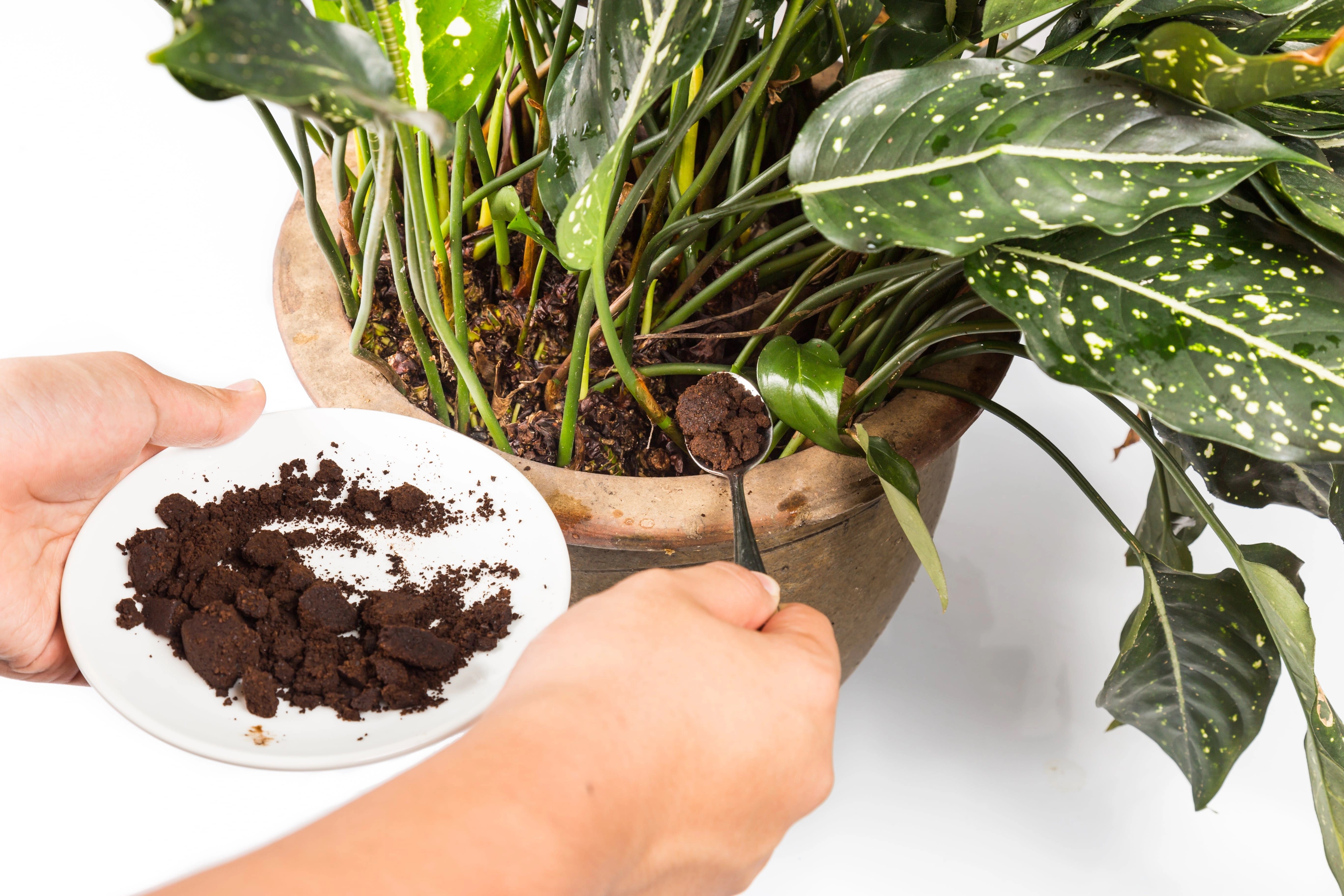



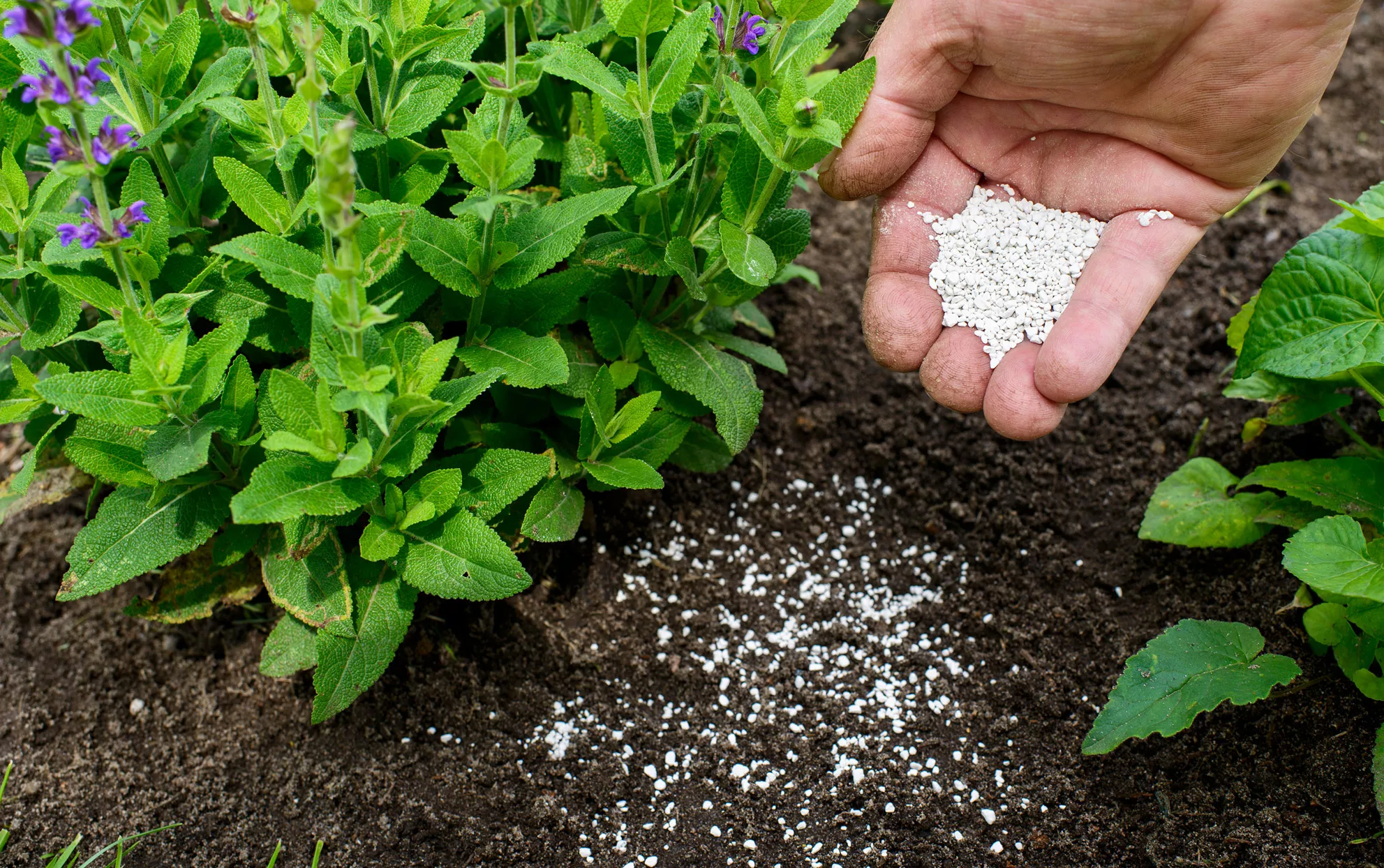
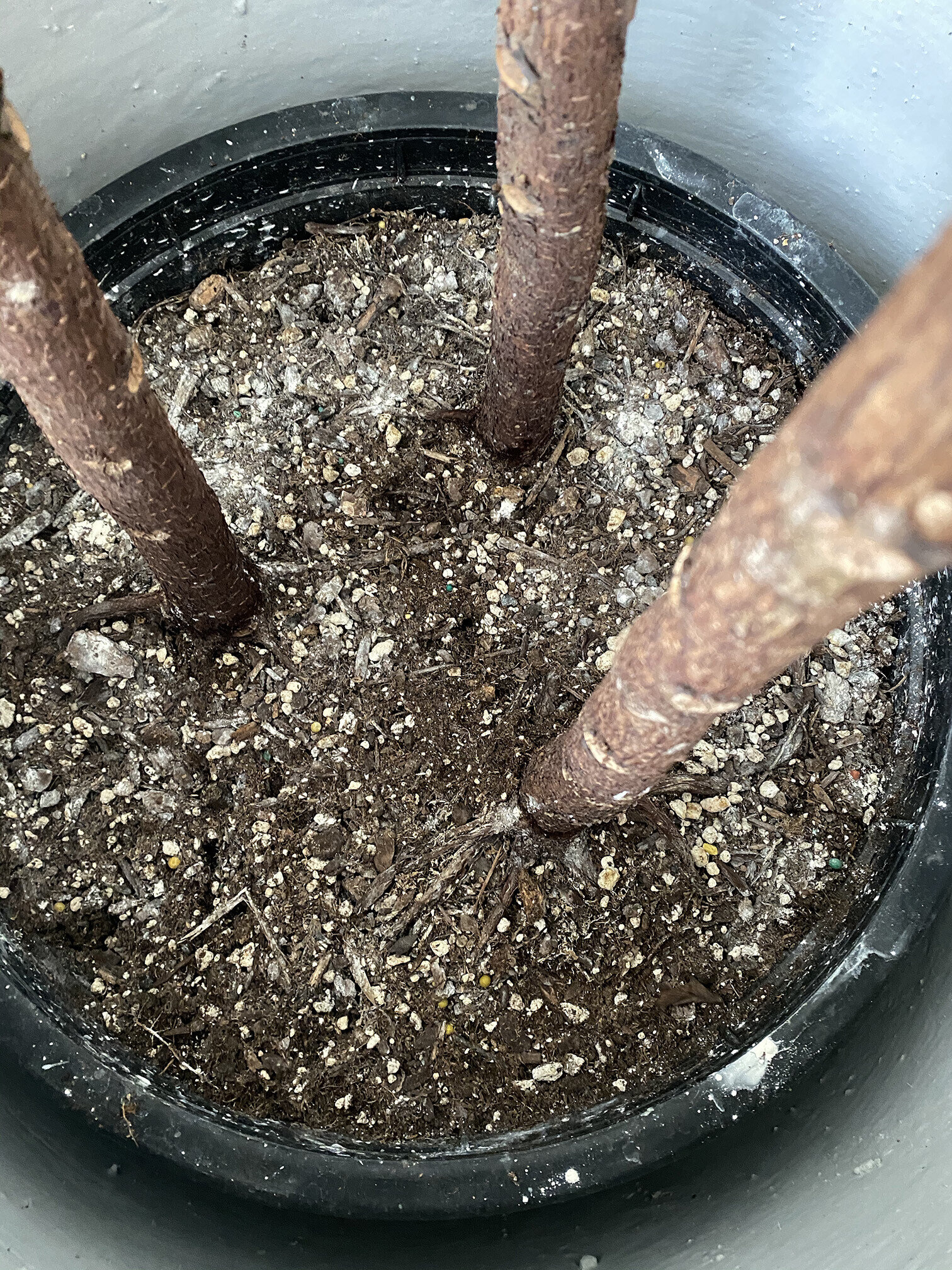

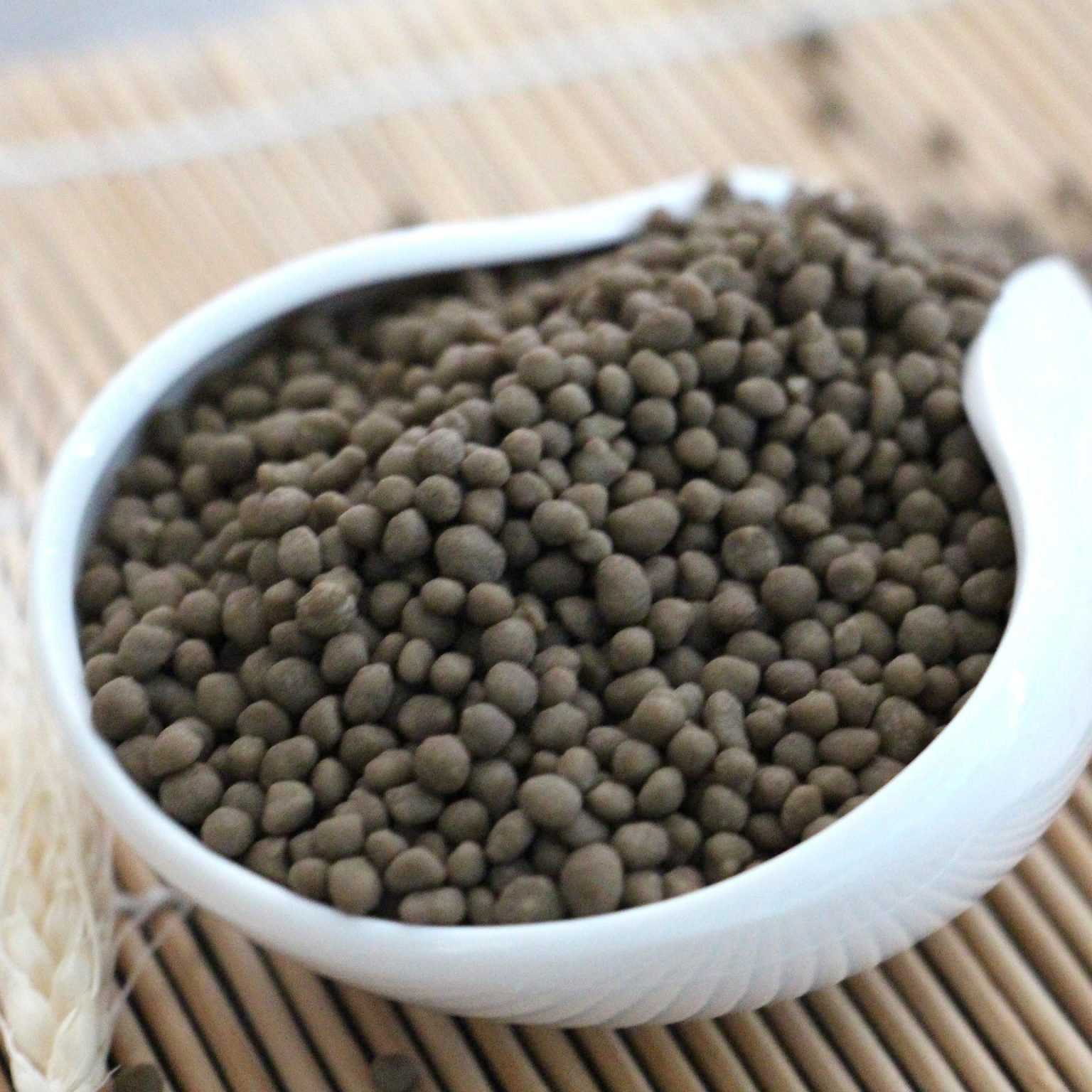
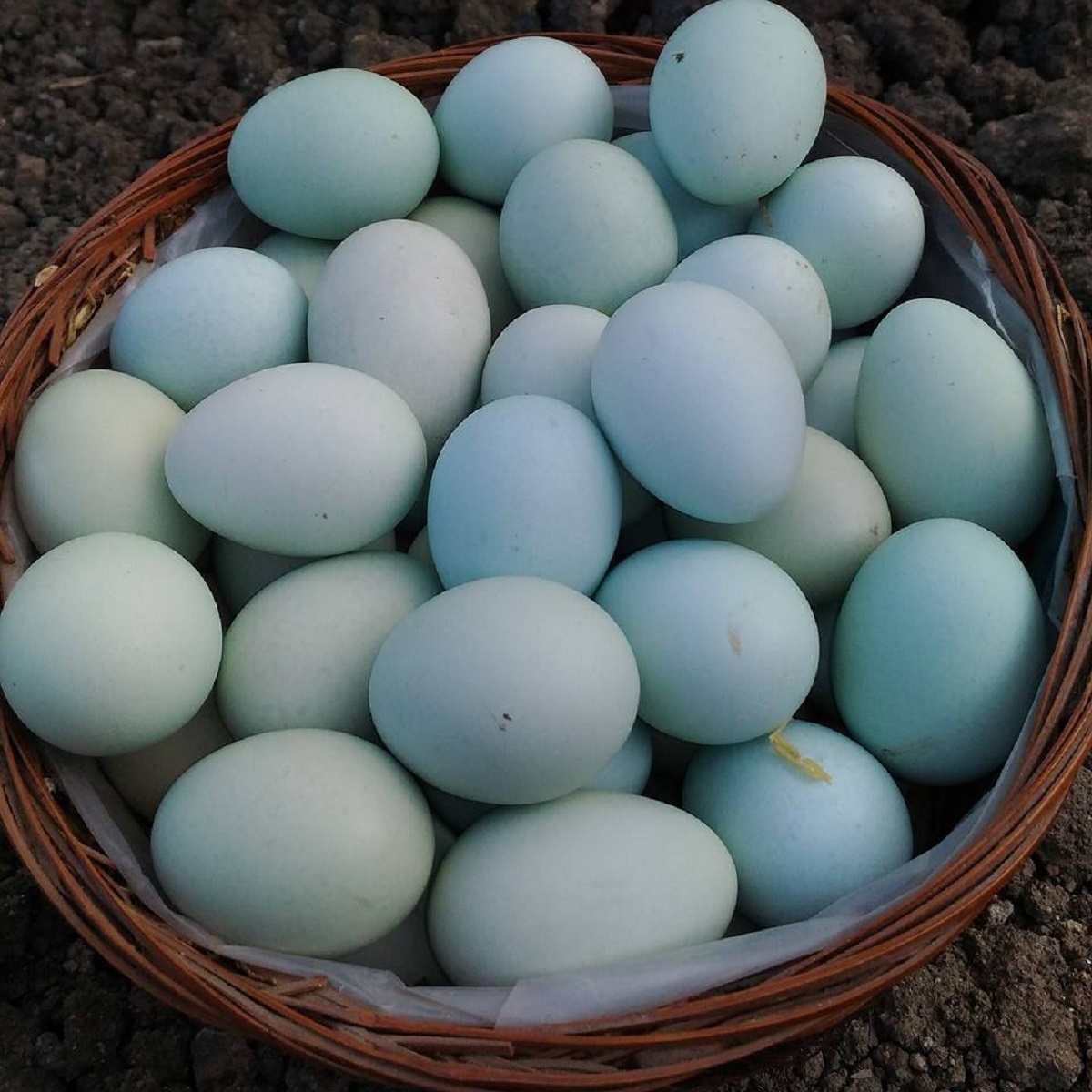
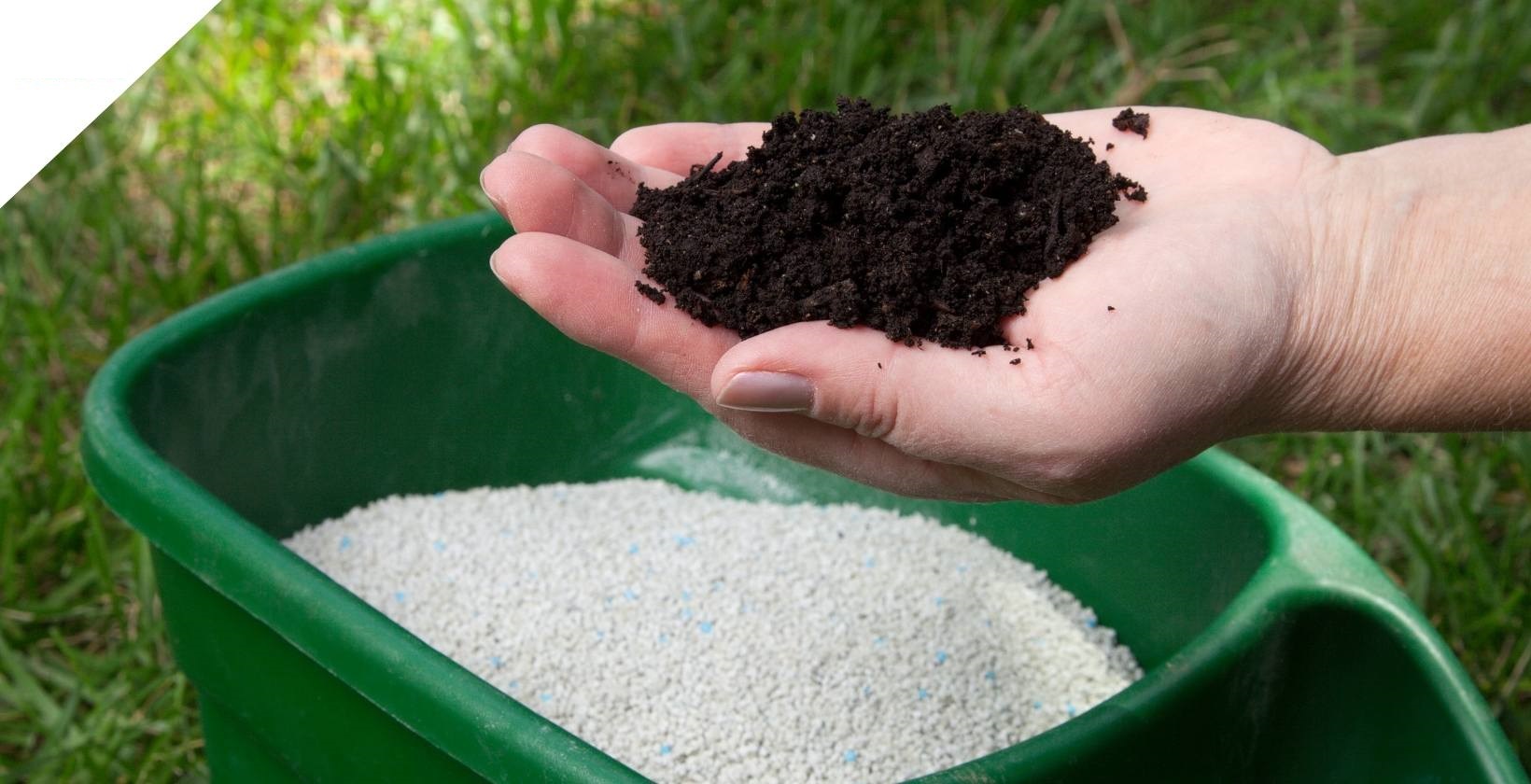



0 thoughts on “How Much Is Fertilizer”